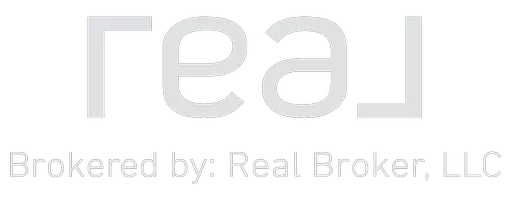Building a Tech Stack for Nonprofit Impact: How Digital Systems Support 175+ Miles of Mountain Bike Trails
Trails do not build themselves. Neither do strong nonprofits.
Developing and maintaining over 20 mountain bike trail systems consisting of 175+ miles on 1,300 acres across 4 counties is already a remarkable achievement. As one of the region’s leading mountain bike nonprofits, the Tarheel Trailblazers are dedicated to building, maintaining, and protecting those trails throughout the Charlotte, North Carolina area.
But with hundreds of volunteers and members, numerous land managers, financial contributors, community partnerships, and ongoing events all in motion simultaneously, keeping our organization running smoothly requires more than just hard work and dedication. To truly fulfill our responsibility, expand our impact, and build a future with thriving trails, we needed stronger systems behind the scenes.
I have always had a deep appreciation for technology and how the right tools can cut through complexity and help organizations like ours move faster and work smarter. As First Vice President, Fundraising Chair, and Governance Chair for the Tarheel Trailblazers, I have focused on building and implementing a tech stack that enables our leadership team and volunteers to work more efficiently, preserve knowledge, and scale our impact.
In this post, I explain why having the right systems behind the scenes is critical to supporting a nonprofit’s growth and operations. At the end, you will find a full list of the technology I use to help manage volunteers, fundraising, communication, and more.
Why I Developed This Tech Stack
When I stepped into leadership, the Tarheel Trailblazers had already achieved major milestones over its nearly 35-year history, most importantly securing access to land to create a network of more than 20 mountain bike trails and building a strong foundation of community support.
Sustaining and building on that success, however, required more than trail access and community passion. It required strengthening the internal systems that would allow the organization to continue growing and evolving.
Some operational systems were already in place. But like many nonprofits, those systems had evolved informally over time, shaped by the needs and styles of the volunteers who helped implement them.
Processes often varied depending on who was managing them, and workflows were not always consistent, which made it difficult to maintain momentum and efficiency as the organization expanded.
There were clear opportunities to strengthen the organization’s internal structure, protect institutional knowledge, and make it easier for volunteers and board members to step in without having to rebuild processes from scratch, putting the Tarheel Trailblazers in a strong position to grow.
The goal was simple:
- Improve communication efficiency.
- Remove bottlenecks.
- Centralize knowledge.
- Reduce barriers to participation.
- Build systems that support and scale the mission.
By strengthening the foundation behind the scenes, we will direct more energy toward what matters most.
Where Mission Meets Technology
The Tarheel Trailblazers’ mission is to maintain, develop, protect, and advocate for mountain biking trails in Charlotte, North Carolina, and the surrounding area, committed to fostering a thriving mountain biking community while safeguarding the land for future generations.
Introducing new technology into a mature organization is not about chasing the latest tools, it’s about creating refined, organized processes that make honoring our mission easier and more sustainable.
These systems help us communicate effectively between board members, connect with volunteers and the community, streamline operations, and preserve institutional knowledge as leadership evolves.
Enabling Broader Participation
One of the most valuable outcomes of implementing these systems has been their ability to make it easier for new volunteers to get involved.
By reducing the learning curve and clarifying workflows, we have lowered barriers to participation across every area of the organization, not just trail work.
Some volunteers want to swing a shovel. Others want to apply their skills in communications, event planning, or fundraising.
Strong systems make it possible for all of them to plug in and contribute meaningfully.
This systematic approach means:
- New committee members can access historical information without lengthy knowledge transfers.
- Specialized skills can be deployed where they are needed most.
- Communication flows smoothly between different operational areas.
- Fundraising and financial processes follow consistent, repeatable patterns.
Strategic Implementation Across Multiple Functions
The focus was on organizing the business operations that had become disconnected and inefficient behind the scenes. By revamping our systems, a foundation was created that allows us to raise funds more effectively, communicate clearly with our community and members, and ultimately dedicate more energy to trail planning and volunteer engagement.
I’ve introduced various tools to tackle specific challenges, while also working to connect systems where it makes sense:
- Our fundraising platforms create clear pathways that reduce friction for donors while providing robust backend management.
- Our communication tools ensure consistent messaging while preserving important conversations.
- Our project management systems help coordinate the complex logistics of trail maintenance across our extensive network.
My Technology Toolkit
Below is a comprehensive look at the tech stack I use to support our mission across multiple organizational roles. These are the tools and systems I rely on regularly. Some board members and volunteers may interact with only a handful of these, but having this infrastructure in place ensures the organization can run more efficiently, protect institutional knowledge, and scale impact over time.
- Tools marked “Admin & Setup” are platforms I implemented and administer. In some cases, I handled the full research, vetting, and setup process independently.
- Tools marked “Admin” are platforms where I serve as an administrator to help manage ongoing operations as needed.
- A list of “Personal” Tools are resources I have access to outside of the organization but use regularly to support the work.
Key Organizational Systems
Core Operational Systems
- Communication & Collaboration
- Slack – Admin & Setup
- Google Workspace (Gmail, Drive, Meet, Calendar, Forms)
- Trailbot (Trail System Management Tool) – Admin & Setup
- CRM & Member Management
- Hivepass – Admin & Setup (Mountain Bike Org. Specific CRM)
- Accounting
- Quickbooks – Admin
Revenue Generation
- Fundraising Solutions
- Give Lively – Admin & Setup
- RallyUp – Admin & Setup
- Merchant Processing
- Stripe – Admin & Setup (integrates with fundraising & events platforms)
- PayPal – Admin
- Square – Admin & Setup
- Event Management
- BikeReg – Admin & Setup
Engagement
- Email Marketing
- Mailchimp – Admin
- Website
- WordPress
- Social Media Management
- Meta Business Suite – Admin & Setup
- Meta Platforms: Instagram, Facebook, Messenger – Admin
- LinkedIn – Admin
- Analytics
- Google Analytics
- Meta Insights
Personal Technology I
Use for the Organization
Productivity & Strategic Planning
- AI
- ChatGPT
- Gemini
- Claude
- Document & Forms
- Microsoft Word/Excel
- Adobe Acrobat
- Zip Forms
- Trail Planning & Mapping
- Google Earth
- Strava
- Ride With GPS
- Garmin Connect
- Wahoo ELEMNT
- Trailforks
Photo, Graphics & Video
- Photo/Graphics
- Adobe Photoshop/Lightroom
- Snapseed
- Prequel
- Scrl
- Video Editing
- CapCut
- InShot
Cost-Saving Opportunities for Nonprofits
Many of the incredible tools we use are available to nonprofit organizations at free or reduced pricing.
If you are building systems for a nonprofit, it is worth taking the time to see what options are available.
For Example:
- Slack offers a free plan for nonprofits below a certain seat amount.
- Google Workspace offers free basic accounts for eligible nonprofits.
- Canva provides a free premium version for verified nonprofits.
- Give Lively is a free fundraising platform built specifically for nonprofits.
- Stripe offers reduced credit card processing rates for approved nonprofits.
These programs can significantly reduce operating costs and make it easier to build a professional, scalable infrastructure without straining your budget. If you are running or supporting a nonprofit, make sure you explore these options, they are out there, and they make a real difference.
Building for the Future
These systems make certain that the Tarheel Trailblazers can focus on what we do best – building and maintaining trails – rather than getting caught in organizational bottlenecks.
The real goal is not just to manage the behind-the-scenes work, it is to protect the mission, amplify the impact, and build something that will outlast any one person.
By methodically refining our digital infrastructure, I have laid the groundwork for the Tarheel Trailblazers to dream bigger, move faster, and achieve more than ever before.
Recent Posts








GET MORE INFORMATION


